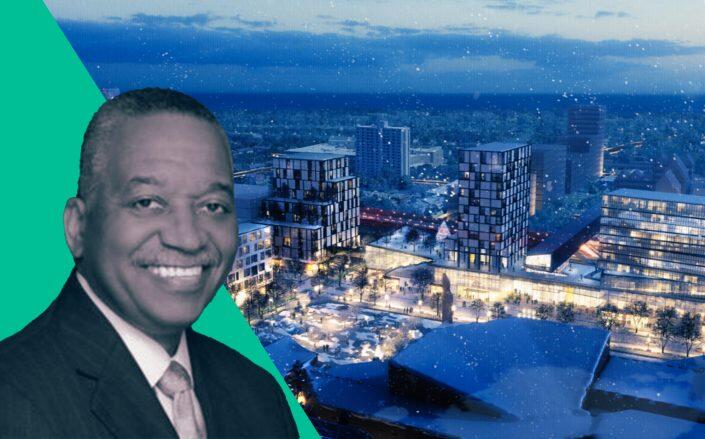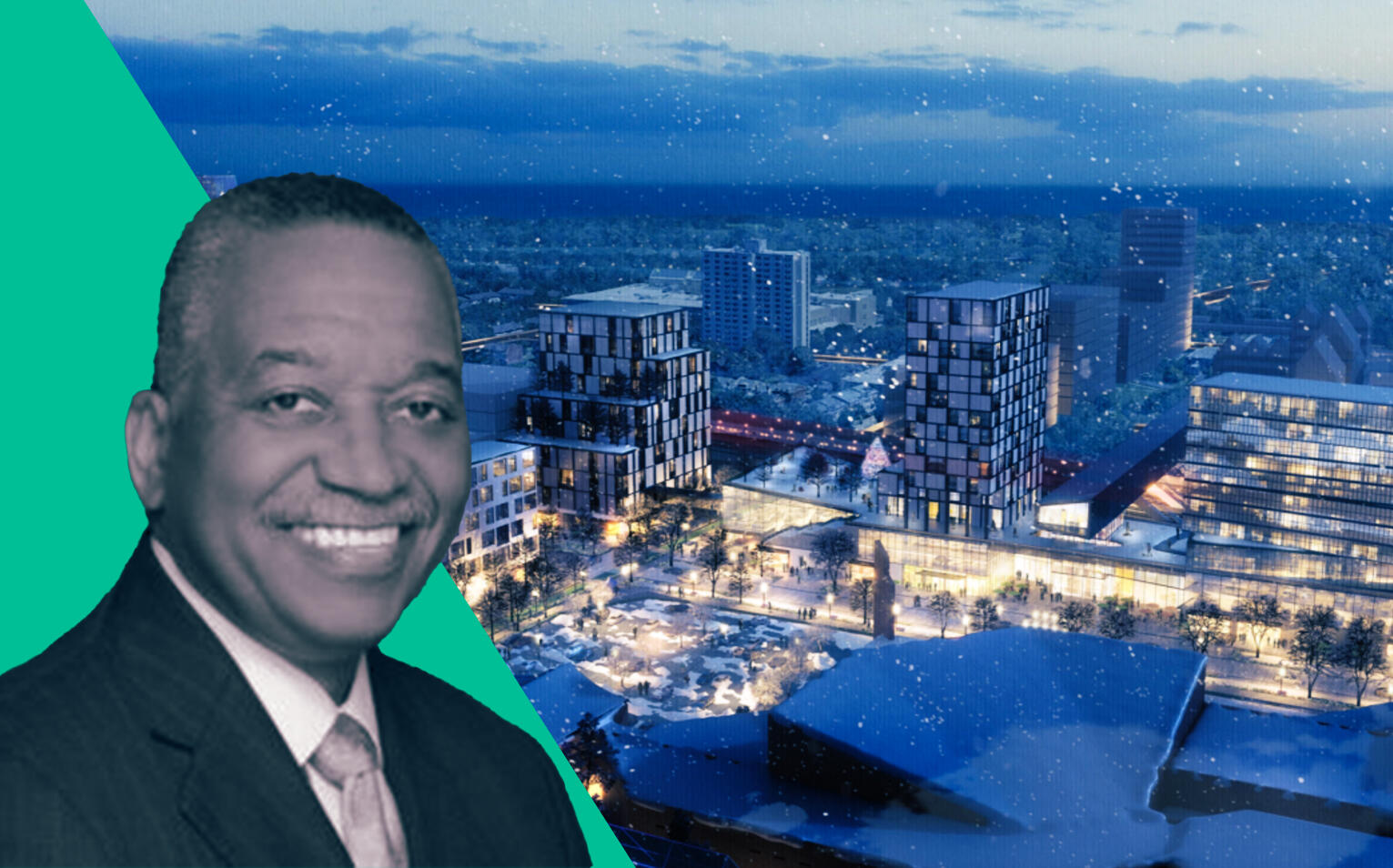
Rev. Byron Brazier and a rendering of the Woodlawn Central development (Summit 19, Woodlawn Central Developers)
A mixed-use development proposed by father-and-son duo of J. Byron Brazier and Reverend Byron Brazier for the area near the new Obama Center is taking shape.
The 18-acre “cultural complex,” which will aim to support the Black and minority-owned businesses and residents who make up more than 80 percent of the Woodlawn population, will include mixed-income housing, performance venues and more, Block Club Chicago reported.
“We will add inventory of affordable housing to this community, as well as be a place of destination for the businesses that are here,” Rev. Brazier said.
The Woodlawn Central Master Plan will be centered around and led by the Apostolic Church of God at 6320 South Dorchester Avenue, where Reverend Brazier is the pastor. The development will be built on the properties near the church including many of parking lots.
The development will include:
- A mixed-use complex with 605 housing units and 47,000 square feet of office and retail
- A 200-seat theater and two more 20-seat theaters
- A nine-story, 810-space parking structure to replace the redeveloped lots
- A 126,000-square-foot office and retail building
- A 530,000-cubic-foot vertical greenhouse with 56 housing units
The plan will also include senior and workforce housing as well as an energy microgrid that will power the developments.
J. Byron Brazier said a hotel chain will anchor the campus for now.
The Braziers have set an “aggressive” timeline to complete the project with plans to break ground in 2023 and complete “at least 85 to 90 percent” of construction by 2026.
“I want to get this done as quickly as possible, because I believe a catalyst shouldn’t take 10 years,” J. Byron Brazier said.
To speed completion, Brazier said the project will use modular construction, in which some building components will be premade and then assembled at the site.
“This is our opportunity to show the rest of the world that our communities are not what has always been thought of as ‘the ghetto’ or ‘the hood,’” J. Byron Brazier said. “This is our opportunity to show our culture, and to show how we serve our own community and serve the rest of the world.”
Read more

[BCC] — Victoria Pruitt
